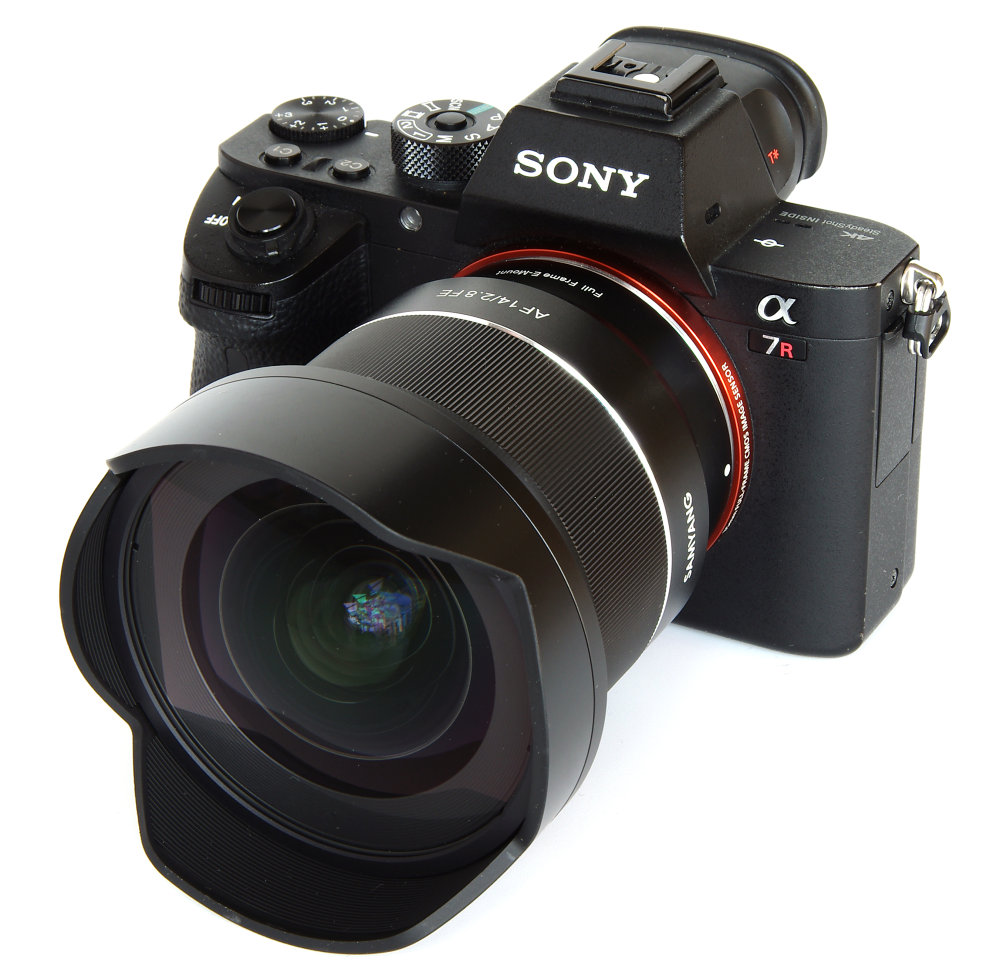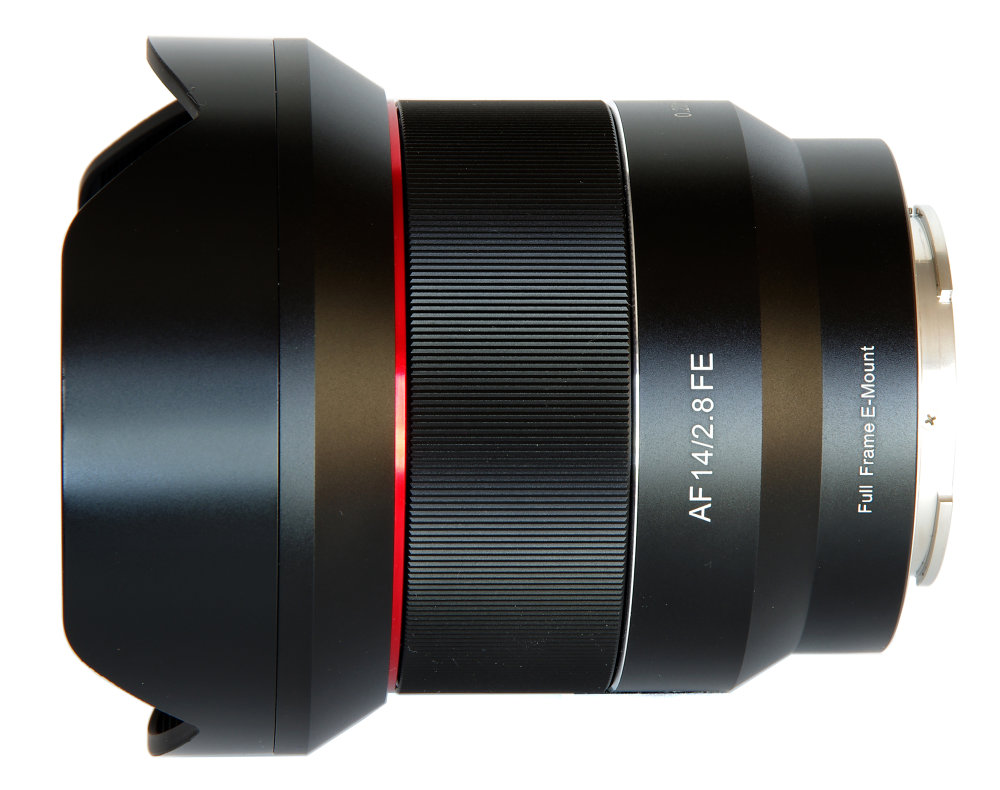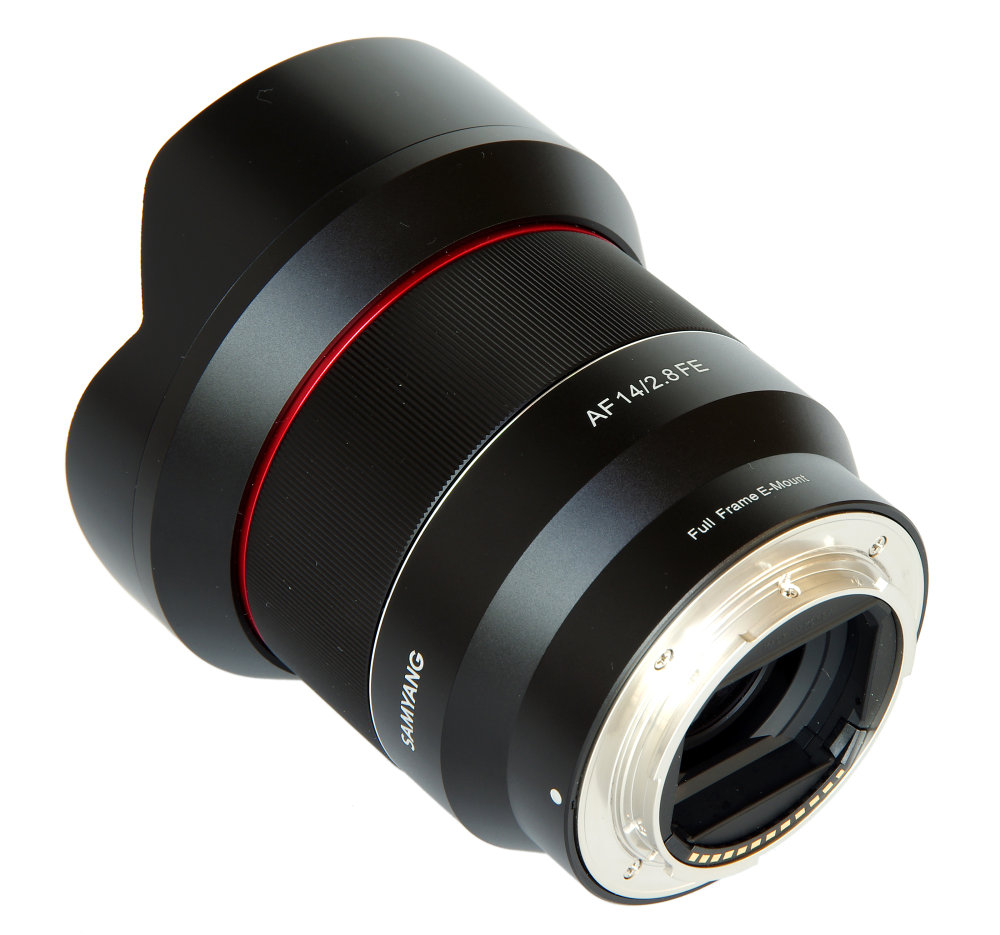Samyang AF 14mm f/2.8 ED FE Lens Review
Samyang AF 14mm f/2.8 ED AS IF UMC Handling and Features
Firstly, the new lens is a rectilinear design, not a fish-eye. That is, straight lines remain as straight lines, making such lenses suitable for architectural subjects.
Designed with the Sony CSC range firmly in mind, the design allows for the short back focus of the E mount. This means the rear element of the lens can be placed much closer to the sensor plane than would be possible with a DSLR, where allowance has to be made for the space taken up by the mirror box. There is no such constraint here, although the sensor design will still mean that the lens should be as telecentric as possible and avoid delivering light rays that are too oblique at the edges. Such are the problems with ultra-wide lens design and Samyang tackle this with a complex internally-focusing design of 14 elements in 10 groups. Three of these elements are aspheric. The lens weighs a noticeable 500g, which adds to the feeling that it is solidly made. However, it is relatively compact and easy to use for prolonged periods.
Starting at the front of the lens there is a substantially made permanently attached petal lens hood. This not only shields the lens against unwanted light but also offers a degree of protection to the large, fairly vulnerable front element. There is no possibility of fitting screw-in filters as the angle of view is so wide that vignetting would result. In any event, for this reason there is no filter thread.
The diaphragm consists of just 7 rounded blades, rather less than is becoming the norm where bokeh is a major consideration, but in terms of an ultra-wide lens arguably satisfactory.
Focusing is virtually silent and goes down to a usefully close 0.20m (0.66'), giving a maximum magnification of 0.12x. There is a manual focus ring on the lens, operating electronically, and it is well placed, having also a beautifully smooth action. Some may find manual focus easier than others, but the extreme depth of field of a 14mm lens does not, I suspect, make it an option for many photographers. Fortunately the AF system is spot on, being fast, accurate and silent.
The instruction leaflet warns that the SteadyShot system should be set to manual for this lens and the 14mm value entered accordingly. In any event, camera shake is much less of a problem with ultra-wide lenses than with telephotos, but it will still no doubt make a useful contribution.
General handling of the lens is absolutely fine. There is very little to get in the way of the photography. The viewfinder image is bright and clear, there are no issues whatsoever. The manufacturing quality is also excellent, from the general finish to the positive metal mount than bayonets smoothly and firmly onto the camera. There is no play in the mount once fitted.
This is of course a full frame lens, marked FE to signify this, but the lens can also be used on the APS-C E mount cameras, in which case the “35mm equivalent” will be around 21mm, in itself a very useful, classic focal length. In full frame terms a 14mm lens is very, very wide and to gain the most benefit from its perspective we need to move in close, and then closer. There is huge potential for a very distinctive view of the world, as well as the architectural applications.
Add your message
Please login here or if you've not registered, you can register here. Registering is safe, quick and free.
photodo Stats
428 MTF tests
74 in-depth photodo reviews
100+ users join each day
Help the lens community by reviewing or rating a lens today via our lens search
Latest Lens Reviews
- Chinon 28mm f/2.8 Vintage Lens Review
- Canon EF 70-200mm f/4L IS II USM Lens Review
- Samyang AF 85mm f/1.4 EF Review
- Sigma 70mm f/2.8 DG Macro Art Review
- Samyang AF 24mm f/2.8 FE Review
- Meike 50mm f/1.7 Review
- Tamron 70-210mm f/4 Di VC USD Review
- Lensbaby Burnside 35mm f/2.8 Review
- Asahi Super Takumar 50mm f/1.4 Review
- Asahi Super-Multi-Coated Takumar 135mm f/3.5 Review



